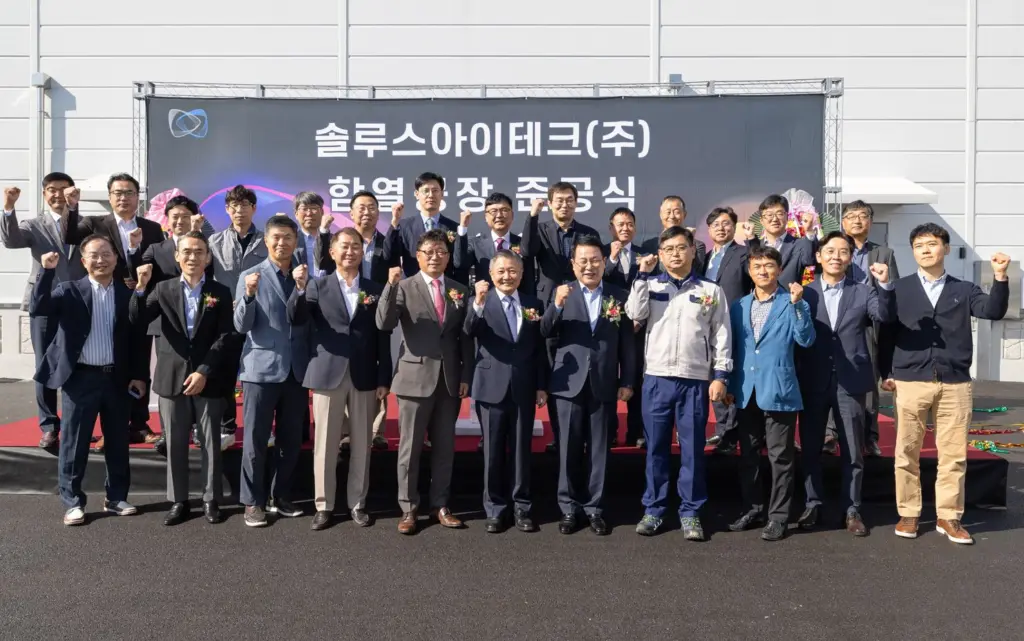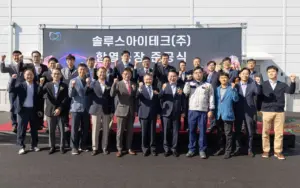Solus Advanced Materials has completed construction on a new production base called Hamyeol Plant for manufacturing non-light-emitting OLED materials. The company held an opening ceremony on October 18th to launch the facility located in Iksan, in the southwest region of South Korea. The 6,006 square meter plant sits on a 25,976 square meter site around 18km from Solus’ existing light emitting material factory.

The new plant will be operated by Solus ITech, a subsidiary established to expand into non-luminous materials. Solus ITech will manufacture OLED filler, high-end encapsulation materials, and quantum dot ink at the facility starting with trial production. Constructing dedicated capacity for non-luminous materials will strengthen Solus’ position beyond its current OLED emitters where it holds numerous patents.
Filler improves luminous performance in polymer OLED displays like large premium TVs. Previously it was imported from Japan and the US, but Solus ITech will be the first Korean producer. Encapsulation materials protect OLED devices in products like smartphones, laptops, and tablets. Bringing non-luminous production in-house allows for greater quality control, cost efficiency, and material expertise compared to outsourcing.
In addition to the new plant, Solus has over 800 patents around emitting materials including electron transport layers, hole transport layers, and hole blocking layers. The company continues to research and mass produce various light-emitting materials. Expanding into non-emissive materials diversifies Solus’ OLED material offerings as the display market grows across mobile, TVs, and IT devices. The integrated facility will allow Solus to control the entire process from R&D to production for non-luminous materials.

